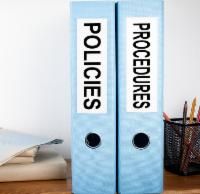In the first part of this series on Operating Procedures (OP), I discussed how detailed an OP should be. In this part I will discuss the different operating phases. The most misunderstood parts of the operating procedure element are the Initial Startup, Temporary Operations, and Emergency Operations. Not specifically mentioned in any of the operating phases, is Normal Startup.
Initial Startup refers to the initial “commissioning” of the process in which the procedure is being written. The initial startup procedure should be extremely detailed and include the initial startup of all the various process components. This procedure can and should involve detailed checkout (prior to introduction of chemicals) and should also include the actual first addition of chemicals into the process. Initial startup may take several hours, days, or weeks in some cases depending on the complexity of the process. It is perfectly acceptable to use this procedure as part of your Pre-Startup and Safety Review (prior to adding chemicals). Once the process has been started and stable, then move to the normal operational phase. In many cases, you will need to add an additional “Normal Startup” phase since you may not need to execute all the steps that you would for the initial startup. However, you may want to use the Initial Startup Phase after a turnaround or major maintenance. In addition, if the process was commissioned prior to May 1992, it is highly recommended you state that in the OP for this operational phase.
Not all facilities will have temporary or emergency operations. However, you need to ensure that this is the case. Many facilities will “temporarily” alter operations for cold or hot weather while others may change operations during hurricanes or flooding. Weather related operations may be considered “emergency operations” in some instances. If you truly do not have a listed operational phase(s) or operate in a phase(s) using the change management (MOC) process, then you should clearly state your intent in your procedure. It is easy for someone familiar with process operations to determine if you have operated outside your normal operational phases through interviews, so it is a good idea to address them all.
In the next part of this series, I will address operating limits, common errors, and best practices to make these limits useful and appropriate.

